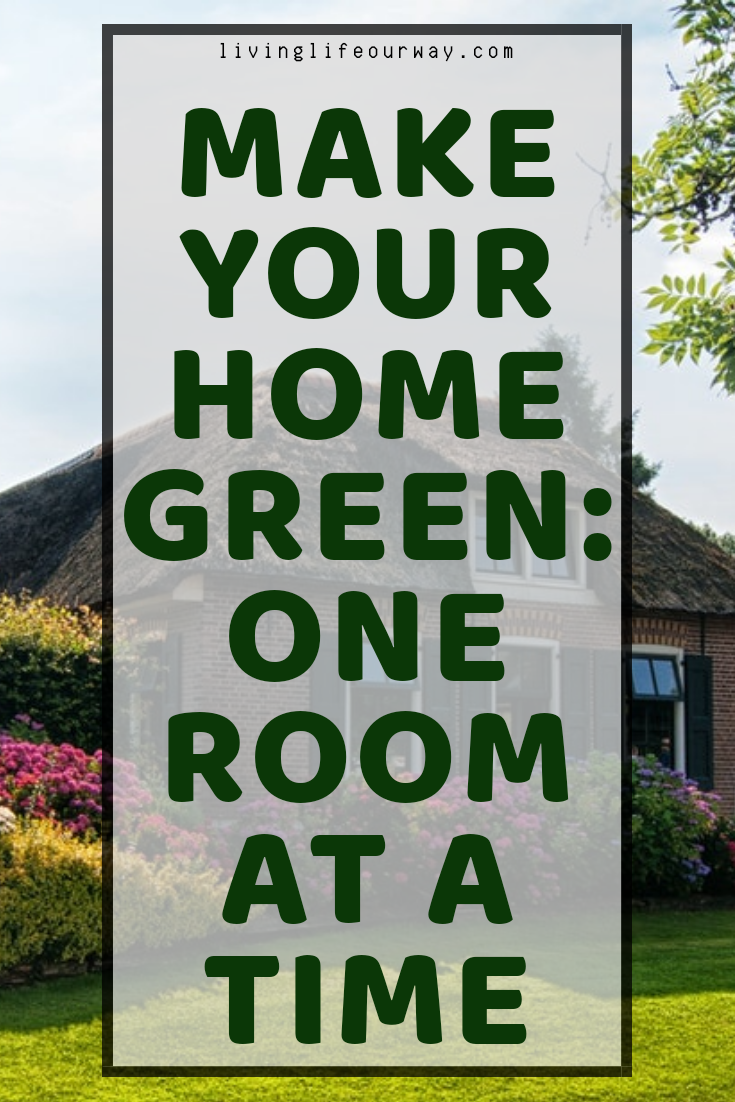It’s easy to say you want your family to go green and live a more socially responsible lifestyle, but when you start to actually think about putting a plan into action it becomes overwhelming. Many people’s first impressions of sustainable living include practicing recycling and refraining from leaving the water running while you brush your teeth. In reality, there is a lot more to living a completely environmentally friendly lifestyle.
A great starting place to focus on is your home. This is the place where your family gathers and where you spend a large amount of your time in your life, so it’s an important place to consider when you want to go green. In order to cut back on the intimidation factor, this guide will break down room-by-room how you can encourage more sustainable practices in your home…
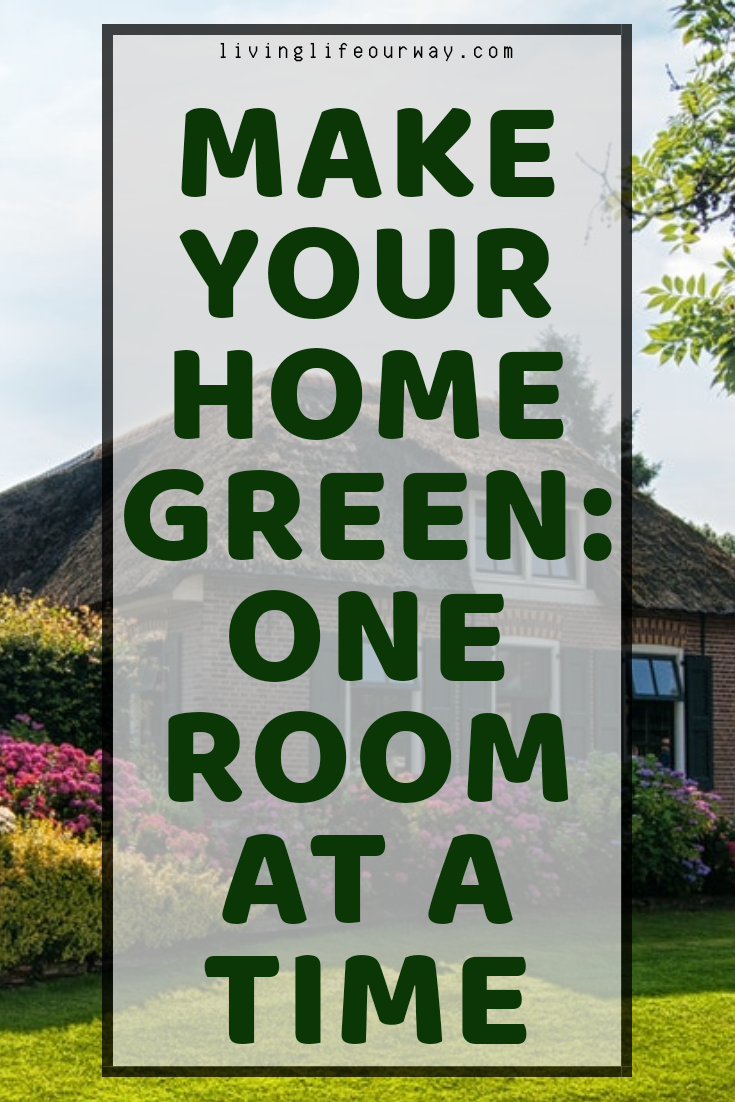
Living Room
Natural Lighting
The living room is one of the easiest places in your home where you can embrace natural lighting as an alternative to keeping bulbs burning. Keeping your curtains open and allowing natural sunlight to light up your living room will be better for energy efficiency and there’s also just something about natural lighting that makes you feel better.
If you can prepare for this while you’re building or choosing a house, look into floor-to-ceiling windows. These are a great interior piece that make your space appear larger and they allow for more natural lighting in your home. You can also consider skylights to provide an easier path for sun to come in through the top of your room.
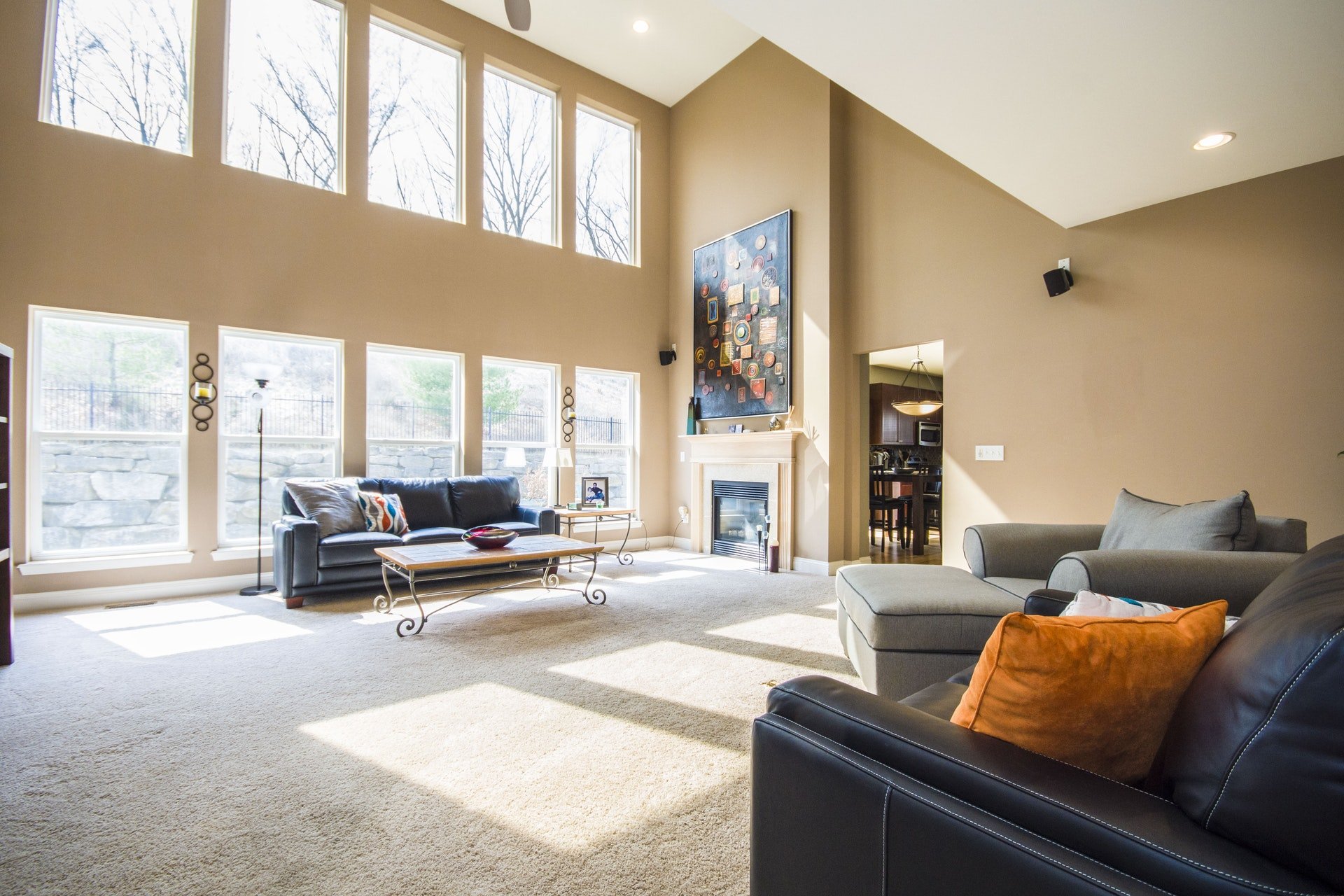
Energy
A staple in American living rooms is a television. To reduce energy usage in your home, cut back on the tv or even eliminate it from your home. Encourage your family to play games together, spend time doing outdoor activities, or reading in the evenings.
Furniture
When furnishing your living room, or any part of your home, try to use recycled materials or repurpose materials in your home. For example, a chair or stool can serve another purpose as a side table. It takes less energy to manufacture goods from recycled materials than from scratch, so try use recycled furniture to help reduce energy consumption in the grand scheme of things.
If you’re buying new materials, purchase from companies that are certified for using sustainable materials. You can also find furniture made with bamboo, a super sustainable material held together by glue rather than toxic chemicals.
Paint
Speaking of toxic chemicals, make sure the paint you’re using for your walls contains low levels of volatile organic compounds (VOC) or a paint that’s entirely VOC-free.
Plants
Part of healthy living includes having good indoor air quality (IAQ). A sustainable practice to help remove pollutants from your air and live in a cleaner environment is to place plants around your home. Some plants naturally purify air and can help eliminate toxins to improve your IAQ.

Kitchen
Groceries
Industrial farming practices are harmful to the environment because of the mass use of resources and the chemicals emitted, so when you’re shopping for groceries, shop locally. Knowing your food was farmed locally will make your meals even more meaningful and personal.
Recycling
The kitchen is the biggest area in your home to focus on your recycling efforts since your family will be consuming food daily. Some examples of waste that can be recycled are plastic containers from yogurt or sodas, cardboard cereal boxes, and aluminum cans. Learn about what materials are recyclable and then set up bins for designated items. Be conscious of the items you’re shopping for too so you can plan in advance to use recyclable materials more often.
Laundry Room
Would you be shocked to find out that 39% of a garment’s environmental impact comes from the care of the consumer? If you think making minor changes to your life to follow more eco-friendly practices isn’t making much of a difference on the world, this fact can prove you wrong.
Some simple steps to get you started are washing your clothes in cold water, reducing the amount of loads you’re doing by waiting longer to wash items like jeans, using toxic-free detergent, and line drying your clothes.
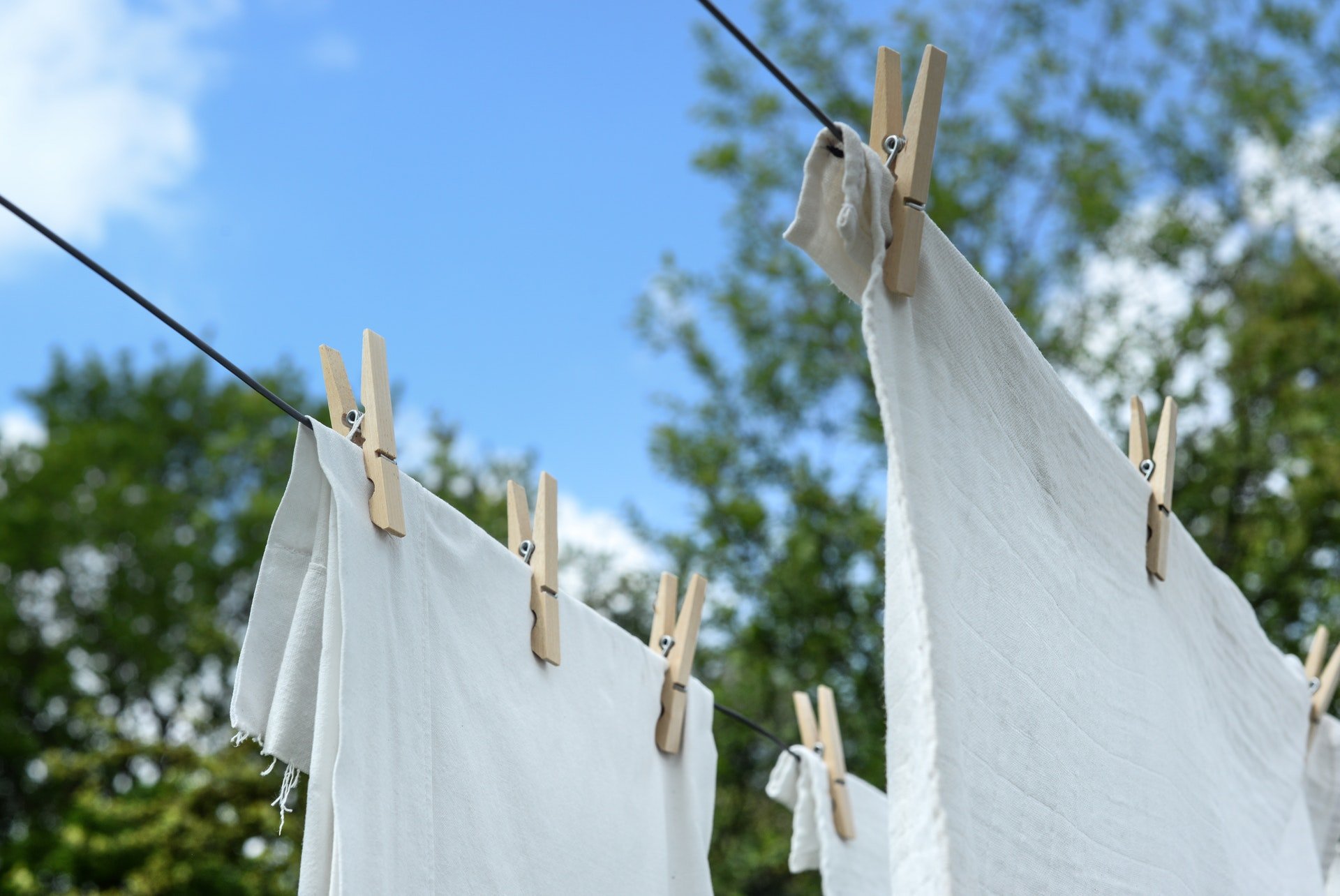
If you’re ready to look into other changes, you can pre-treat your clothes with an enzyme spray to hold you over between washes. You can also soak your whites in oxygen cleaner to remove sweat stains without having to run the clothes through the washer.
Bedrooms
Your Bedding
The main factor defining your bedroom is your bed, so you should make sure it’s environmentally friendly. There are tons of factors to consider in a mattress to make sure you’re getting your best sleep for your best health, and the sustainability should be one of them.
Look for organic mattresses made from 100% natural materials, or companies that are approved by Oeko-Tex or have a GREENGUARD certification. There’s also a plethora of options for organic bedding materials to dress your mattress in so that your bed can be “green” from headboard to toe. And when it’s time to get rid of your mattress in about 7-10 years, be socially responsible and donate or recycle.
Check out more eco bedroom tips here.
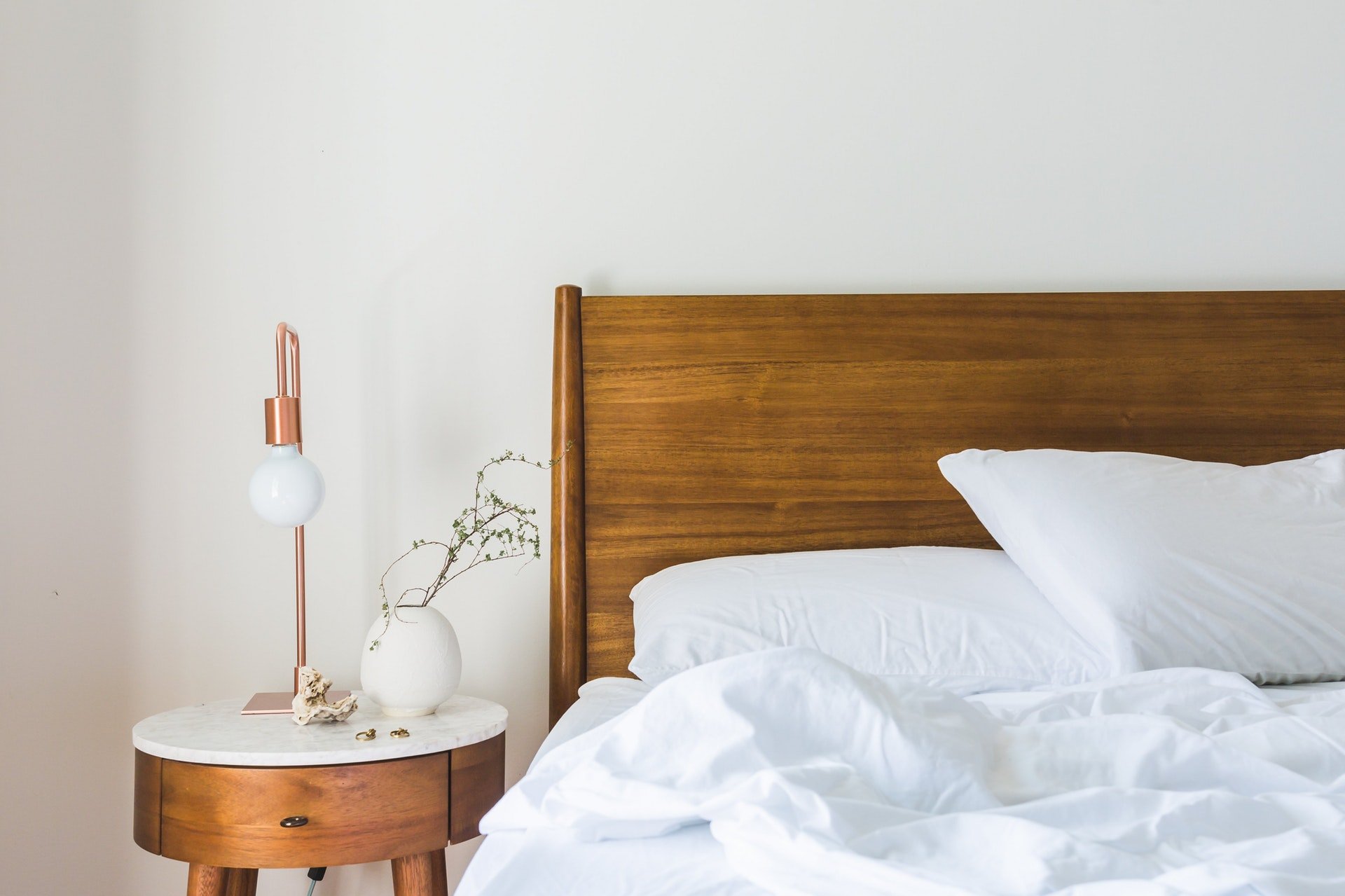
Sleep Aids
Have trouble sleeping at night? Don’t turn to pharmaceuticals. Instead try natural sleep aids like a warm cup of herbal tea. You could also do nighttime yoga. Stretching your body out helps relax your muscles and your mind making you ready for your best ZZZs.
Bathrooms
Water Usage
You’re probably using water the most in your bathrooms, so it’s a great place to start when you’re looking to cut down your carbon footprint. Simple steps include taking shorter showers or using LED bulbs for your lighting. For shorter showers, try a 5-minute shower timer that sticks to your wall and helps you monitor your time spent scrubbing off.
Larger steps to take to be eco-friendly in the bathroom include investing in low-flow toilets and motion sensor sinks to cut back on water usage.
Outside
Decor
For your outdoor decor, use repurposed furniture from inside your home rather than purchasing new items. You can use old chairs you’re no longer interested in having in your home or give an old piece a new function by converting a coffee table into a planter.
Gardening
Create compost piles from the materials in your kitchen to help you start a garden. You can grow your own vegetables and herbs too.

Transportation
Instead of emitting gases from your car daily, ride a bike instead. Bikes are practical, environmentally friendly, and will give you more physical activity during the day to help your health.
Creating a Green Home
If you’re interested in getting used to environmentally friendly practices but you’re still new to sustainable living it may seem challenging and overwhelming. Taking it step-by-step will help you naturally progress into new practices. Don’t try to change your entire lifestyle in one day. It’s a process that takes time and research.
When deciding how to move towards a more eco-friendly life, adopt a minimalist mentality away from consumer culture. This will help you cut back to the essentials and be on your way to having a green home.
Author Bio
Laurie Larson is a freelance writer from Durham, NC. When she’s not busy writing, she enjoys spending time out in nature and reading her favorite books.
For more ideas on creating an eco-friendly home, see this guest post on Motherhood: Real Deal and this post by Anklebiters Adventures.

